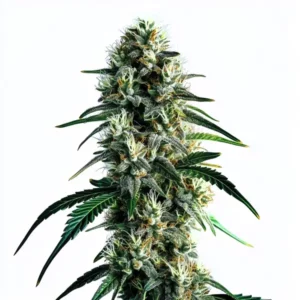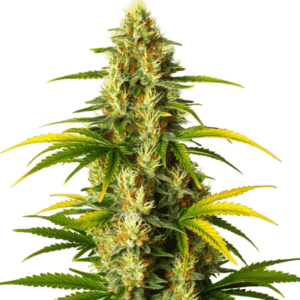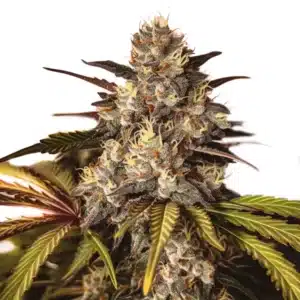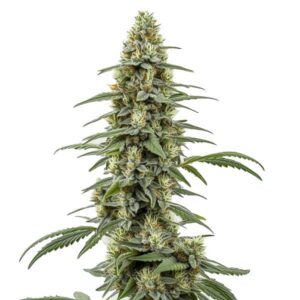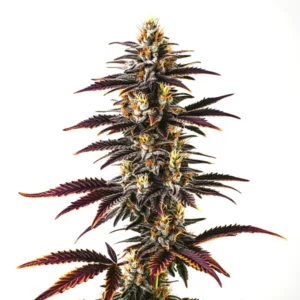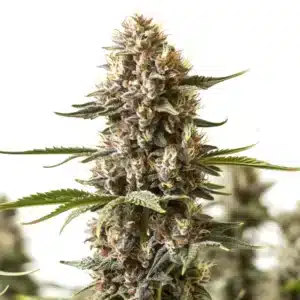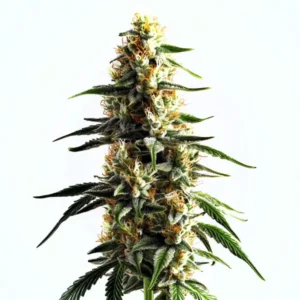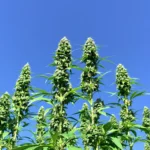
Photoreceptors vs Photoperiod: What’s the Difference?
When diving into the world of cannabis cultivation, understanding terms like photoreceptors and photoperiod can be a game-changer. These concepts might sound complex, but they play a huge role in how plants grow and thrive. In fact, many growers ask: Photoreceptors vs Photoperiod: What’s the Difference? Both are crucial in ensuring your cannabis plants develop properly, leading to a bountiful harvest.
Photoreceptors are like the eyes of a plant. They detect light and send signals to the plant, triggering various growth responses. This is where the magic begins. Photoperiod, on the other hand, refers to the length of time a plant is exposed to light within a 24-hour period. This cycle of light and dark influences when plants flower and when they remain in vegetative growth.
Recommended Strains
Super Silver Haze
|
|
THC | 22% - 24% (Medium) |
|
|
Type | Feminized |
|
|
Yield | High |
|
|
Phenotype | 10% Indica / 90% Sativa |
Blue Dream
|
|
THC | 17% - 24% (Medium) |
|
|
Type | Feminized |
|
|
Yield | High |
|
|
Phenotype | 50% Indica / 50% Sativa |
For first-time cannabis growers or seasoned cultivators, knowing these differences can help in choosing the right strain. For instance, strains like Blue Dream or Girl Scout Cookies from Blimburn Seeds are photoperiod strains, requiring specific light cycles to flower.
Photoreceptors: The Plant’s Light Sensors
Photoreceptors are proteins that absorb light. They are sensitive to specific wavelengths, helping plants measure the quality and quantity of light. Think of photoreceptors as tiny sensors that help plants “see.” They are crucial for plant development, affecting everything from seed germination to flowering. Knowing Photoreceptors vs Photoperiod: What’s the Difference? is essential for growers, since photoreceptors respond to light signals, while photoperiod refers to the duration of light exposure that triggers growth phases.
Different types of photoreceptors detect different kinds of light. For example, phytochromes respond to red and far-red light, while cryptochromes and phototropins respond to blue and ultraviolet light. These responses dictate how plants grow, when they open their leaves, and even how they stretch towards light sources.
Knowing photoreceptors in plants is essential for optimizing growth conditions. By knowing how these receptors function, growers can adjust their lighting setups to cater to the specific needs of their crops. This understanding not only leads to healthier plants but also enhances overall productivity.
Additionally, the manipulation of photoreceptors can help mitigate adverse environmental conditions. By controlling light exposure, growers can counteract the effects of inadequate natural sunlight, ensuring that their plants maintain optimal growth rates and achieve maximum yield potential.
How Photoreceptors Affect Plant Responses
Photoreceptors play a critical role in plant behavior. They influence processes such as phototropism, where plants grow towards light, ensuring they capture as much sunlight as possible. For cannabis, this is vital for maximizing photosynthesis, leading to healthier and more robust growth. Knowing Photoreceptors vs Photoperiod: What’s the Difference? is essential for growers, as photoreceptors regulate how plants perceive light, while photoperiod determines when they flower, directly impacting yield and quality.
They also affect the plant’s circadian rhythm, a 24-hour internal clock. This internal timing helps plants anticipate daily changes, like sunrise and sunset, optimizing their growth accordingly. For cannabis cultivators, knowing these responses can help in setting up grow lights effectively.
How photoreceptors affect plant responses is evident in their ability to trigger defensive mechanisms. When plants detect specific light cues, they can enhance their resistance to pests and diseases, which is crucial for maintaining crop health and reducing losses.
Moreover, the interaction between photoreceptors and other plant hormones can lead to improved growth patterns. By influencing hormone levels, photoreceptors ensure that plants adapt to their environment efficiently, promoting better survival and productivity.
Promos & Deals
The Significance of Photoperiod
Photoperiod refers to the duration of light and darkness a plant experiences in a 24-hour period. It’s a fundamental factor that determines when a cannabis plant will flower. In nature, cannabis plants are photoperiodic, meaning they rely on shorter daylight hours to trigger flowering. Knowing this concept is key when exploring Photoreceptors vs Photoperiod: What’s the Difference?, since photoreceptors are the mechanisms that sense light changes, while the photoperiod dictates the actual timing that initiates flowering.
For growers, manipulating photoperiods can simulate different seasons, tricking plants into flowering whenever desired. This is particularly useful for indoor growing, where natural light cycles can be controlled with grow lights and timers.
The function of photoperiod in plant growth extends beyond flowering. It also influences root development and nutrient uptake, which are crucial for the overall health and vigor of the plant. Proper management of photoperiod can lead to stronger root systems and more efficient nutrient absorption.
Furthermore, understanding photoperiod is essential for breeding programs. By controlling light cycles, breeders can experiment with different flowering times, leading to the development of new strains with unique characteristics and improved resilience to environmental challenges.

Role of Photoperiod in Plant Growth
Photoperiod is crucial for transitioning plants from vegetative growth to flowering. During the vegetative phase, plants require longer light periods to grow leaves and stems. When the light period shortens, the plant begins to flower, focusing energy on bud production.
Managing photoperiod effectively leads to optimal flowering times. For cannabis, this means ensuring a 12/12 light cycle (12 hours of light, 12 hours of dark) to induce flowering. This balance helps maximize yield and potency, essential for strains like Super Silver Haze from Blimburn Seeds.
Knowing the function of photoperiod in plant growth allows growers to schedule their cultivation cycles more efficiently. By predicting when plants will flower, they can plan harvests and optimize resource allocation, ultimately increasing productivity.
Additionally, the control of photoperiod can help synchronize flowering across different plant batches, ensuring uniformity in growth and quality. This consistency is particularly important for commercial growers aiming to supply a steady and reliable product to the market.
Comparing Photoreceptors and Photoperiod in Agriculture
In agriculture, both photoreceptors and photoperiod play pivotal roles in maximizing crop yield and quality. While photoreceptors ensure plants respond appropriately to light, photoperiod dictates the timing of these responses, such as flowering and fruiting. Knowing Photoreceptors vs Photoperiod: What’s the Difference? is key for growers, as it highlights how light perception and day-length control work together to influence plant development.
For cannabis, this means that both elements need to be carefully managed to achieve the best results. Understanding the nuances between photoreceptors vs photoperiod can inform decisions about strain selection and cultivation techniques.
Comparing photoreceptors and photoperiod in agriculture illustrates the complexity of plant growth management. By balancing these factors, growers can fine-tune their cultivation methods to meet specific goals, whether it’s increasing yield, enhancing flavor, or improving resistance to environmental stressors.
Moreover, the integration of advanced technologies, such as automated lighting systems, can further enhance the precision with which photoreceptors and photoperiod are managed. This technological approach leads to more sustainable and efficient farming practices, ultimately benefiting both producers and consumers.
Photoreceptors and Photoperiod Differences
Photoreceptors are more about the immediate response to light, allowing plants to adapt quickly to changes in their environment. Photoperiod, however, is about long-term changes, guiding plants through different stages of their life cycle.
In practical terms, growers might use photoreceptors to adjust light quality for better plant health, while manipulating photoperiod to control flowering times. This dual approach enables precision in achieving desired outcomes.
Photoreceptors and photoperiod differences are essential for tailoring growth strategies to specific plant needs. By understanding these differences, growers can create a cultivation environment that maximizes the potential of each plant, leading to superior quality and yield.
Additionally, recognizing these differences can help in troubleshooting growth issues. If a plant is not responding as expected, growers can evaluate whether adjustments in light quality or duration are needed to correct the problem, ensuring continued success in cultivation.

FAQs
What are photoreceptors in plants?
Photoreceptors are proteins that allow plants to detect light. They are sensitive to specific wavelengths and are essential for various plant growth processes. By absorbing light, they send signals that influence how plants grow, when they flower, and how they respond to their environment.
For cannabis, photoreceptors help in maximizing photosynthesis and managing growth patterns. They play a crucial role in ensuring the plant develops correctly, responding to changes in light quality and quantity.
Knowing photoreceptors in plants is crucial for developing effective cultivation strategies. By knowing how these proteins function, growers can tailor their lighting conditions to enhance growth and productivity.
Furthermore, research into photoreceptors continues to unveil new insights into plant biology. These discoveries may lead to innovative techniques for improving crop resilience and efficiency, benefiting the agricultural industry as a whole.
Why is photoperiod important for cannabis cultivation?
Photoperiod is vital because it determines when a cannabis plant will transition from vegetative growth to flowering. This cycle of light and dark signals plants to start producing buds, a critical phase for harvest.
By controlling photoperiod, growers can induce flowering at will, regardless of the season. This control is especially beneficial for indoor growers aiming for multiple harvests per year.
The role of photoperiod in plant growth extends to influencing other physiological processes, such as nutrient uptake and stress responses. Proper management of photoperiod can result in more robust plants with enhanced resistance to adverse conditions.
Additionally, knowing photoperiod is essential for optimizing resource use. By aligning light cycles with plant needs, growers can reduce energy consumption and improve the sustainability of their operations.
How do photoreceptors affect plant responses?
Photoreceptors influence plant responses by detecting light and triggering growth behaviors. They affect phototropism, circadian rhythms, and other growth processes, ensuring that plants respond effectively to their environment.
For cannabis, these responses can be manipulated to improve light absorption and optimize growth, leading to healthier plants and higher yields.
How photoreceptors affect plant responses is crucial for tailoring cultivation techniques to specific plant needs. By understanding these responses, growers can create optimal environments that promote plant health and productivity.
Moreover, advances in research on photoreceptors may lead to new methods for enhancing plant resilience and adaptation, providing valuable tools for both traditional and modern agricultural practices.
Can I manipulate photoreceptors and photoperiod for better yields?
Yes, manipulating both photoreceptors and photoperiod can lead to improved yields. By adjusting light quality and duration, growers can influence plant growth stages and maximize production.
Using controlled environments, like indoor grow rooms, allows for precise management of these factors, resulting in more consistent and higher-quality harvests.
Photoreceptors and photoperiod differences allow for targeted manipulation of plant growth processes. By understanding these differences, growers can implement strategies that enhance yield and quality, tailored to specific crop goals.
Incorporating technology, such as programmable LED lights, can further enhance the ability to control these factors, leading to even greater efficiency and success in cultivation endeavors.
What cannabis strains benefit most from photoperiod control?
Photoperiod control is crucial for photoperiod strains like Blue Dream, Girl Scout Cookies, and Super Silver Haze. These strains require specific light cycles to flower and produce buds.
By managing photoperiod effectively, growers can ensure these strains flower at the right time, optimizing both yield and potency for a successful harvest.
Knowing photoreceptors and photoperiod differences is key to selecting the right strains for cultivation. By choosing strains that align with their light management capabilities, growers can achieve superior results.
Additionally, experimenting with different photoperiod regimes can lead to the development of new strains with unique characteristics, offering exciting possibilities for innovation in cannabis cultivation.


